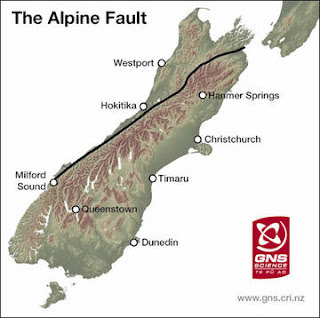The most spectacular mountain range on planet Earth. Containing the worlds highest peaks, it is certainly quite a sight. I, being no great mountaineer went trekking in the lowlands and returned late last night.
It was extremely cold, but the mountains were stunning, so it was all worth it. We have reached our second boundary type! So here goes the science....
The Himalayas are a result of the "Convergent Collision" boundary type, located at approximately: 27°59′17″ N 86°55′31″E.
Convergent collision is where two plates move towards one another, resulting in a continental collision. The plates resist subduction and the crust of the plates moves up, raising land creating mountains where a trench would be. This process is called Orogeny. Orogens develop when the continental plate is somewhat "crumpled" to form mountain ranges. The Himalayas were formed when India "collided" with Asia, so when the northern moving Indo-Australian Plate merged into the Eurasian Plate. The plate pushed up into the other creating the Himalayas, referred to as a "fold mountain." Each year, the Indo-Australian plate moves 67 mm north into Eurasia. This means that the highest peaks in the world are growing taller yet, every moment! (To be exact, they rise 5 mm per year meaning they are geologically active.)
http://en.wikipedia.org/wiki/File:Himalaya-formation.gif
Diagram of the Himalayas and tectonics:
http://www.moorlandschool.co.uk/earth/earth_science/Himalayas_collision.gif
The gorgeous Himalayas:
http://media.nowpublic.net/images//70/d/70d2b6e0e5f3d8894f4420299b838b17.jpg
K2, the second highest peak:
http://images.wikia.com/synchromystic/images/0/07/K2.jpg
The peaks along with the Tibetan Plateau:
http://mapstor.com/data/images/articles/mountain-formation/tibet-himalayas-from-space.jpg
Hope you are enjoying the blog so far! Now I'm off to New Zealand for our second to last boundary. I'll update you soon...
Feri Bhetaula!
It was extremely cold, but the mountains were stunning, so it was all worth it. We have reached our second boundary type! So here goes the science....
The Himalayas are a result of the "Convergent Collision" boundary type, located at approximately: 27°59′17″ N 86°55′31″E.
Convergent collision is where two plates move towards one another, resulting in a continental collision. The plates resist subduction and the crust of the plates moves up, raising land creating mountains where a trench would be. This process is called Orogeny. Orogens develop when the continental plate is somewhat "crumpled" to form mountain ranges. The Himalayas were formed when India "collided" with Asia, so when the northern moving Indo-Australian Plate merged into the Eurasian Plate. The plate pushed up into the other creating the Himalayas, referred to as a "fold mountain." Each year, the Indo-Australian plate moves 67 mm north into Eurasia. This means that the highest peaks in the world are growing taller yet, every moment! (To be exact, they rise 5 mm per year meaning they are geologically active.)
This is a great picture, depicting India's journey over the years:
Diagram of the Himalayas and tectonics:
http://www.moorlandschool.co.uk/earth/earth_science/Himalayas_collision.gif
The gorgeous Himalayas:
http://media.nowpublic.net/images//70/d/70d2b6e0e5f3d8894f4420299b838b17.jpg
K2, the second highest peak:
http://images.wikia.com/synchromystic/images/0/07/K2.jpg
http://mapstor.com/data/images/articles/mountain-formation/tibet-himalayas-from-space.jpg
Hope you are enjoying the blog so far! Now I'm off to New Zealand for our second to last boundary. I'll update you soon...
Feri Bhetaula!



















